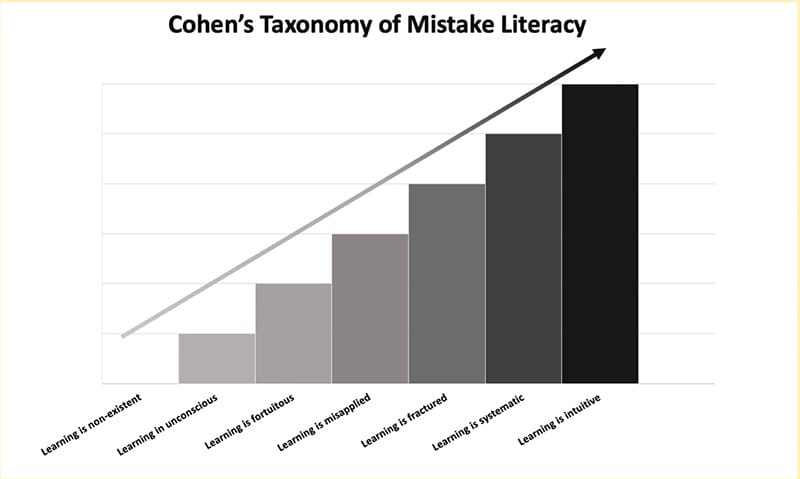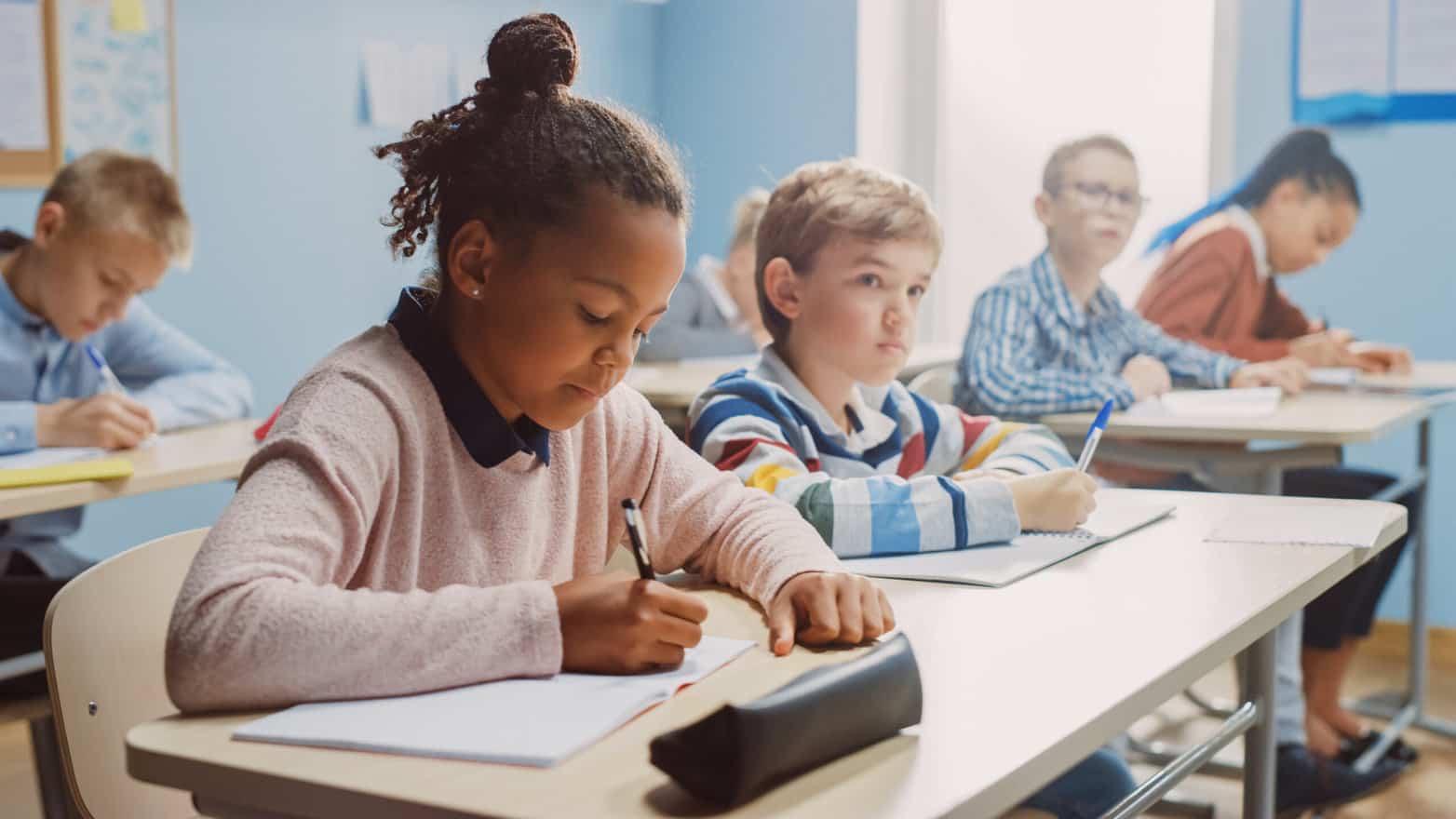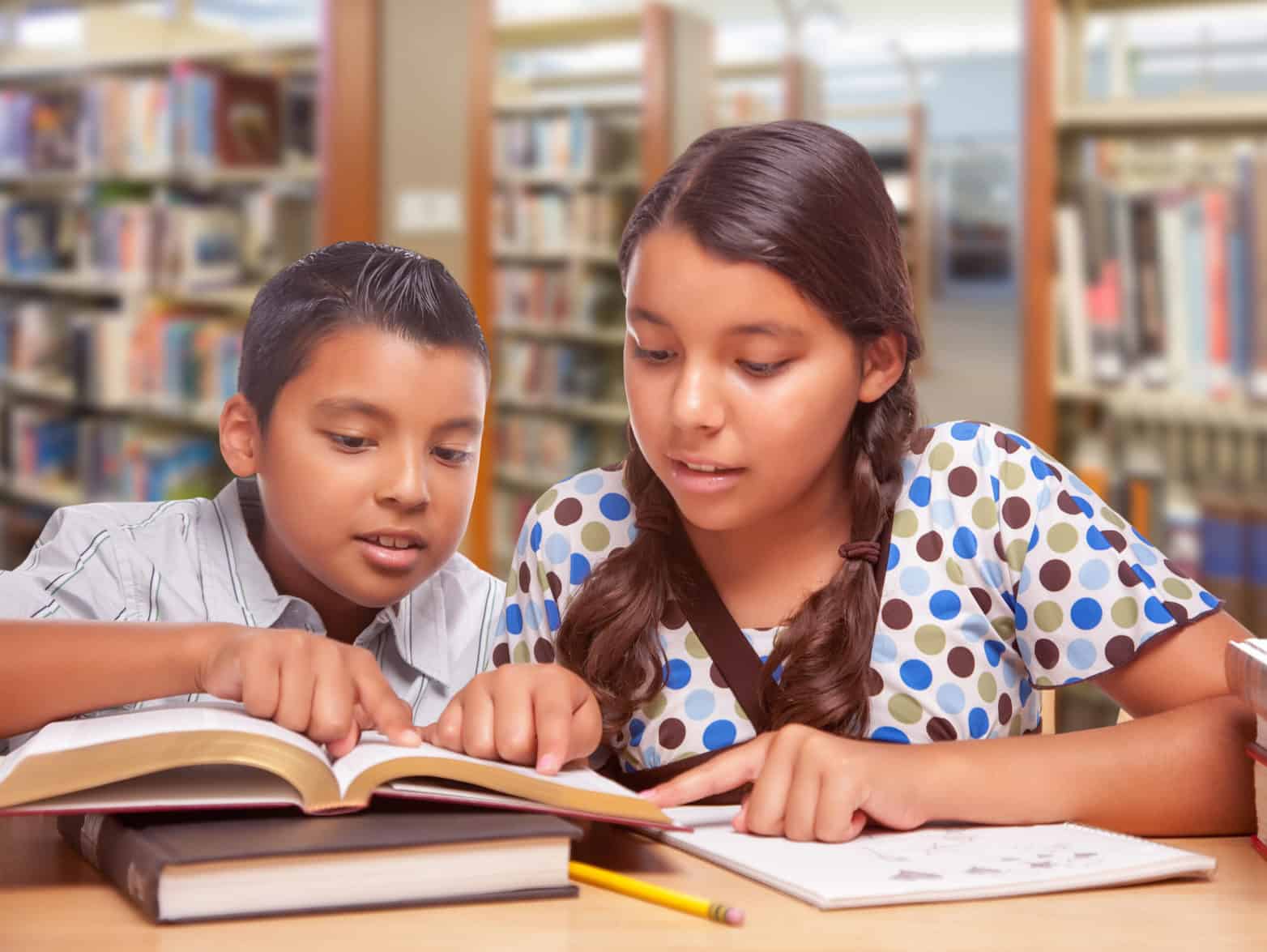A blueprint for moving from mistake-making to mistake-learning
“Getting it wrong and wrong and wrong and then, on careful reconsideration, getting it wrong again. That’s how we know we’re alive; we’re wrong.”
– Philip Roth, American Pastoral
When I was in third grade, I was inexplicably placed in the highest math class. How this happened, I do not know. What I do know is that I was overmatched. What I should have done was communicate my struggles to my teacher or parents; perhaps, there were interventions that could have buoyed my academic flailings. Instead, I took it on myself to remedy my misplacement by quietly and deliberately signaling my struggles.
In an ill-advised move, I simply chose to stop doing math homework altogether. That’s right – I didn’t do any of my math homework between October and December of 1995. Fortunately, these were the days before texting and emailing was commonplace. As such, it wasn’t until parent-teacher conferences in December that the chickens came home to roost. But, roost they did! As my mom chased me down the halls of P.S. 321, after hearing the news, I thought to myself, “I can’t let this happen again!”
At only 8 years old – and as part of my months’-long grounding – I developed a more effective time management system, grew my self-advocacy skills, and invested in becoming a more proactive communicator. From this single (and sustained) mistake, I walked away with quite a bit of learning. The thing is, the one kind of learning I didn’t walk away with was math. I never really improved as a math student.
I share this anecdote because, for several months now, I’ve been writing for Student Achievement Partners in an effort to illuminate the delicate and tangled science of how we can equip students with the will, skill, and thrill to convert mistake-making into mistake-learning. The thing is, I keep tossing around the word “learning” without ever having articulated what that word actually means. I obviously learned from my mistake as a third-grade math student, and yet this type of learning had nothing to do with my multiplication tables. So, what does it actually mean to learn from a mistake?
Existing research on the topic relies on traditional measures of learning, including long-term recall, post-training transfer, and/or academic performance as measured by pre- and post-intervention assessments. In other words, existing research measures learning along the binary of achievement and performance. But I’m not so sure that this is the most appropriate way for us to measure whether students are learning from mistakes. I mean, isn’t learning from mistakes a bit more nuanced and even taxonomic than that? My own experiences making and learning from mistakes reflects this. And, according to my own research, this is true for most of us.
Mistakes are a feature of all aspects of life. They are present in equal measure and frequency across age, place, and context. Just as the context in which mistakes are made is endlessly diverse, so too are the kinds of mistakes that are made. Forgetting to pick up a child from school is a different sort of mistake from that child standing up in social studies class to argue in favor of Teddy Roosevelt’s New Deal, which is different from that child’s other parent misreading a colleague’s body language during a tense meeting. As Kathryn Schulz writes, “There are errors of planning, errors of execution, errors of commission, errors of omission, design errors, operator errors, endogenous errors, and exogenous errors…to name just a few.”
Wrongness itself is infinitely vast according to Alina Tugend. And, since mistakes are a natural byproduct of the human experience, attitudes, behaviors, and dispositions further contribute to the endless kinds and causes of mistakes, including and ranging from stress, distraction, and disorganization to overconfidence, inadequate training, and lack of information.
Given the endless diversity of mistakes that can be made, how can we lend clarity to the mechanisms and pathways that enable learning to occur from them?
Cohen’s Taxonomy of Mistake Literacy seeks to lend language to the kinds of learning that may result from mistake-making, ranging from non-existent to intuitive. The purpose of identifying each kind of learning is to contextualize and individuate the sought-after learning that comes from the application of those strategies that I’ve written about in previous posts. In this way, the aim of Mistake Literacy can be understood in both relative and absolute terms along the broader spectrum of possible learning outcomes.
According to Cohen’s Taxonomy of Mistake Literacy, there are seven levels of learning that may result from mistake-making. This model classifies such learning into levels of consciousness and specificity, as informed by the presence or absence of engagement, motivation, and choice, in addition to circumstantial factors. The lowest level along the Taxonomy, and thus the first to be discussed, is what occurs when a mistake is made and no learning follows.

Figure 1. Cohen’s Taxonomy of Mistake Literacy
Learning is Non-existent
When learning is non-existent, a mistake is made, brought to the level of consciousness, and summarily dismissed. Typically, when a mistake is made, learning is the natural counterbalance. At this level, equilibrium is not sought. Mistake-making becomes the starting point for a positive feedback loop, wherein this lack of intended learning amplifies the magnitude of the mistake, which, in turn, accelerates future mistake-making. Without learning to intervene, mistake-making goes unregulated, resulting in a divergence from the natural symbiosis that exists between mistakes and learning.
A setting where learning would have the potential to be non-existent could be a freshman-level college course. A student who is taking this course might have no intention to continue taking courses in this particular discipline, but is registered because it is part of their university’s core curriculum. The professor returns the student’s final examination. The student earns a respectable B. The student notes the grade, but does not bother to flip through the examination to see where mistakes might have been made. The student is ultimately satisfied with this mark. As such, the student places the examination in their backpack to be thrown out once they get back to their dorm.
In this instance, student motivation is low, engagement is low, and choice is altogether non-existent. Even if this student wanted to repair their mistakes, the course is over and Winter Break has begun. In this instance, circumstances have conspired to ensure that no learning could occur.
Learning is Unconscious
The second level along the taxonomy is when learning from a mistake is unconscious: a mistake is made, that mistake is acknowledged, and the learning becomes instinctual. In this instance, the learning, though present, does not exist at the conscious level. Rather, the learning is an unconscious response to external stimuli. In this way, the learning, albeit useful, is limited because its level of transferability is finite. As a result, this method of learning does not prime future learning to occur.
Picture a child who touches a hot stove. The mistake is brought to the conscious level almost immediately, but the learning does not rise to that level of consciousness. The child, or even the adult that child will grow into, will avoid touching hot things, but they are not actively conscious of the choice to not do so. Instead, it becomes a matter of instinct to not place one’s hand on a hot stove top while cooking. This learning has value, of course, but this method of learning cannot be scaled, and thus, does not allow for growth. Consider that this method of learning applied to crossing a busy intersection would mean that one would need to be hit by a car before learning that it is important to look both ways.
In this instance, motivation is high, engagement is low, and choice is low. When cooking, one can be reading a recipe book, engaged in conversation with their spouse, and listening to a podcast all while not touching the hot stove. In this way, the learning is present, but it is not conscious.
Learning is Accidental / Fortuitous
The third level along the taxonomy is when learning from a mistake is accidental: a mistake is made, there is an awareness of the mistake having been made, and that mistake is repaired; however, the fact that the mistake was repaired is a matter of chance. In this instance, non-intentional actions led to the desired outcome. This outcome, though serendipitous, is not arrived at in a systematic or replicable way. Rather, one is seeking to rectify their mistake by groping for solutions. This is a moment of mismatch between the self and the situation. One knows what resolution should look like, but doesn’t know how to get there. As such, they engage in trial and error.
An example of this would be when one’s car breaks down on the side of the road for the first time. One knows that the sought-after outcome is for their car to start; however, they do not have the skills or knowledge to arrive at that endpoint with any degree of systematic or intentional thought or action. Thus, to move towards their desired outcome, the individual would begin by applying relevant systematics to the situation (i.e., applying their general knowledge of cars by checking the tires, the engine, and the oil) until that well eventually runs dry. At that point, one begins to grope until they find something that causes the car to start again. Just because one got their car to start does not mean that one has learned anything from their unsuccessful trials that could be applied if this same situation were to arise again down the road.
In this instance, motivation is high, engagement is moderate, and choice is limited. Engagement is moderate because one is focused on the outcome rather than the process, thus preventing further and deeper learning from occurring. Additionally, while choice is not low, it is limited by the gap that exists between one’s knowledge and the situation at hand.
Learning is Misapplied
The fourth level along the taxonomy is when learning from a mistake is misapplied: a mistake is made, that mistake is acknowledged, and learning results; however, that learning is not fully understood and thus is likely to be misapplied. While learning is present, the depth of that learning is insufficient to carry one forward into the next novel situation. Because there are limitations to the learning at this level, it is also possible for the learner to make false assumptions, as the learner might not fully understand the “why” underlying the learning.
To once again use the example of a broken-down car, one might attempt a number of fixes to get the car to restart. After unsystematically fiddling with the engine, the car magically does restart. One might walk away from this situation certain that they now know what to do the next time their car should break down. However, the reality is that the car had simply overheated and needed time to cool down. It was just a matter of coincidence that the car had cooled down after the individual fiddled with the engine.
In this instance, motivation is high, engagement is high, and choice remains limited. At this level, one is more engaged with the process of repairing their mistake, but their understanding of that learning is in danger of being misapplied in the future. Additionally, choice remains limited, as one is anchored to their existing schematics.
Learning is Fractured
The fifth level along the taxonomy is when learning from a mistake is fractured: a mistake is made, there is an awareness of that mistake, and learning occurs, but the learning is limited because it is not connected to the whole. In other words, the learner cannot make sense of the learning within the big picture, and instead only sees a fraction of what is going on. In this case, learning has occurred, but one does not see the full scope of the learning – the learner cannot construct a larger constellation of understanding. So, while this level of learning puts one on the path towards systematic learning, the learner lacks the necessary context to arrive there.
An example of fractured learning that would be familiar to any language arts teacher would be when providing feedback on an essay. When a student turns in an essay with a strong narrative but weak conventions (e.g., spelling, punctuation, grammar), the feedback will often revolve around helping that student improve their fluency with conventions. On their next essay, that student becomes so hyperfocused on improving their conventions that their strength in developing a coherent narrative begins to break down. In this example, the learner understood the feedback around conventions, but did not understand how to apply this learning within the larger context of their writing.
In this instance, motivation is high, engagement is high, and choice is high, but generalizability is non-existent. The learner has focused so intently on a single deficit that they lose the forest for the trees, and things around the mistake that were once stable begin to break down.
Learning is Systematic
The sixth level along the taxonomy is when learning from a mistake is systematic: a mistake is made, recognized, repaired, and reflected on. This is the aim of Mistake Literacy. This process involves high levels of intentionality, stemming from the interaction between mindset and self-efficacy. Through the application of this process, one develops an understanding of the learning, the context in which the learning occurs, and how to apply the learning to novel situations moving forward.
There is a universality to systematic learning, as its application in one context can be translated to others. By following the steps of Mistake Literacy to repair one’s errors on a math exam, for example, one is now better positioned to recognize, react to, and repair their mistakes in other contexts. Each passthrough of Mistake Literacy strengthens one’s ability to learn from mistakes. Thus, even when circumstances change, these same steps can still be followed. In this instance, motivation is high, engagement is high, and choice is high, as one’s mindset is process-oriented and actively seeks to utilize all possible resources at their disposal, as opposed to relying on schematics.
Learning is Intuitive
The seventh level along the taxonomy is when learning from a mistake is intuitive: a mistake is not yet made, but one can sense its arrival and thus seeks to address it before it ever manifests. Following countless passthroughs of Mistake Literacy, one develops an intuitive schematic to recognize, react to, and repair mistakes before the mistake even materializes. Whereas systematic learning is actively and continually interactive, intuitive learning is integrated. While systematic learning can be thought of as hyperconscious, intuitive learning can be thought of as the other end of unconsciousness.
An example of intuitive learning comes from really high performing professionals who can sense that a conversation in a meeting is going off-track before it ever does. This person does not even fully experience the mistake before seeking to address it. This is because they have developed a schematic that allows them to self-correct before the mistake is fully formed. In this instance, motivation is high, engagement is instinctual, and choice is grounded in past experience, as one is tapping into an existing schematic to recognize, react to, and repair a mistake before it has even occurred.
Learning from mistakes is the result of many intersecting variables, not all of which we, as educators, are in control of. Nonetheless, there are plenty of variables that are within our control. To learn how you can do your part to help students reach the apotheosis of this taxonomy, check out this webinar.





